Introduction
Have you ever known someone that just has to tinker with things? You know the guy I am talking about. It is never good enough. There is always one more tweak, hack, or adjustment to be done to get that few extra MHz out of their systems. Well, imagine a room full of the same people. This is what you get when you talk about ASUS' R&D team. ASUS makes some great boards, but to the R&D team it is still not enough.
This team of tinkerers continues to improve on their designs with new BIOS features, new drivers and in some cases, new revisions of products that ASUS already has on the market. It is this mindset that allows ASUS to produce the excellent products that they have. Today we are taking a look at one of these; the ASUS M4A89TD PRO/USB3. This is an AMD 890FX based motherboard that headlines the upper end of their mainstream products.
As the name suggests, the M4A89TD PRO/USB3 does have USB 3.0 on-board along with a host of other features. These features include Turbo Unlocker, Core Unlocker, Turbo Key II, TurboV EVO; all for only $184.99 on NewEgg.com. Will the performance of this board along with the features list equal the price? You know what to do to find out.
The Box and What's Inside
Package and Contents
The M4A89TD PRO/USB3 arrived in a box that's eye catching, but thankfully not eye-watering. ASUS has given the box a light green tint (almost a powder green). This is to denote that it is an AMD based product (Intel is blue). The front has the "Extreme Design" logo that has become standard for this level of product along with a few badges to highlight important features and supported products (like the Phenom II X6).
On the back we find a more detailed explanation of the core features listed on the front along with a diagram of the board pin pointing the location of major components. If we read into what we see on the back, then ASUS' major push with the M4A89TD PRO/USB3 is people looking to get more from the CPUs they buy. With Core Unlocker featured on the left, we have a feeling that ASUS is looking for the people buying dual and tri core CPUs and hoping to find out they are really quads.
With other items like Turbo Unlocker and TurboV listed, this impression is further supported. Oddly enough, items like Express Gate, Fan Expert, CPU Level Up and the 6+2 Xtreme Phase are not listed on the box.
The goodies inside the box are decent. ASUS has thrown in some higher quality SATA cables for your use along with their Q-shield and Q-Connectors. There is no Crossfire Bridge, but most AMD GPUs ship with them anyway.
With this limited amount of accessories, we can only conclude that the money is in the board design and components used.
The Motherboard
The Board
The ASUS M4A89TD PRO/USB3 is an ATX design, but has some interesting departures from the more traditional layout. These departures could mean some extra performance, or they could end up being an albatross around the M4A89TD's neck. For now, let's take a walk around the board.
The upper half of the M4A89TD is where we find some of the most obvious changes in design philosophy. ASUS has moved the RAM slots over towards the right hand edge of the board along with the CPU socket. This has allowed them to place all the power regulation hardware in a neat line parallel to the I/O ports. ASUS has also placed the 890FX NB at the bottom of this line. All of this is covered by the same heatsink instead of breaking things off and connecting them by a heatpipe.
Taking a closer look, we find an old ASUS favourite; the MemOK! button. This button can help you adjust your RAM during POST to ensure your settings are going to work.
At the top of the RAM slots we find a pair of switches. These control the Core Unlocker and the Turbo Key II functions on the board.
Here we have a better shot of the linear power regulation setup with the 890FX at the bottom. The 4-pin Aux 12V power connector is a little awkward here, but as no one else is putting these in a better place, we will not fault ASUS for this.
The lower half of the M4A89TD shows off its positioning in the upper end of the mainstream market. With only two x16 slots on the board, you are not getting more than Crossfire. You also have a single x1 and x4 slot for audio or TV tuners. Beneath the PCIe slots are two PCI 2.0 slots for all of your legacy devices.
On the other side of the M4A89TD we find another interesting departure. ASUS has split the six SATA 3.0 ports into offset groups (three each). This helps with getting the cables in and out of the ports. The PATA port is still at a 90 degree angle, but as the included cable is wide and flat, this angle can help with air flow in the long run.
The I/O ports are fairly typical, although we were surprised to see a PS/2 port for both mouse and keyboard. Many motherboards are switching over to all USB or only leaving a single dual purpose PS/2 port.
So now the question we have to ask is, will these design departures be a benefit, or will they create an issue as ASUS has to extend the signal traces in unusual patterns? We are going to find out in a few, that is for sure.
BIOS and Overclocking
BIOS
The M4A89TD PRO/USB3 has the typical ASUS AMI BIOS; the overclocking page is named AI Tweaker (unlike the enthusiast level boards which have the Extreme Tweaker). However, that does not take away from the functionality of the AI Tweaker. You still get many of the same options found on the Republic of Gamers boards.
Inside the AI Tweaker you find a couple of important pages that deal with memory timings and drive numbers. These provide you with a multitude of options to get the best performance and stability from your memory and the IMC on your AMD CPU.
Under the Advanced tab there are some additional pages that, while not as important as the AI Tweaker settings, can help you with stability if you are having issues on that end.
On the CPU Configuration page you can also enable the ASUS Core Unlocker as well as disable cores on your CPU individually. This setting is one that I am not sure is useful. After all, if I buy a quad core or a sexa core, why would I want to turn CPU cores off? True, with AMD CPUs there are times when a single core will fail an OC while the rest pass, but turning off a core will still cause more performance loss than it is worth in most cases.
The DRAM controller page has the usual options that are available to AMD CPUs.
Onboard devices configuration needs no extra explanation.
In the power section of the BIOS we found some odd settings. There was a list of voltages that at first we thought were only a display. It turns out they are limits in some way. The VCore was set to 1.416 and was preventing higher settings regardless of what was set in the AI Tweaker page. This setting was preventing our Phenom II X6 from getting over the 250MHz mark until we changed it to "Ignore". Also present on this page is ASUS' Q-Fan options; these are great if you are looking for the best combination of cooling and noise reduction.
Overclocking
Although ASUS makes some excellent overclocking motherboards, this one was hindered by the AMD CPU we used. The Phenom II X6 1090T we have as a test CPU has yet to allow us to push it over 4.1GHz with any type of stability. Once we hit the 250MHz mark for the bus we began to have some pretty frustrating stability issues. We were able to run roughly half of our tests without crashing to the desktop or rebooting. That was until we found a small setting in the BIOS that was limiting the CPU voltage to 1.416.
After we told the system to ignore this voltage, the voltages evened out and we were able to find stability at 250MHz x 16 for around 4GHz CPU speed. At 251MHz things went south again rapidly, so we need to do some additional tweaking to get past this limit.
You can see the validation for the ASUS M4A89TD PRO/USB3 here.
TurboV EVO
The ASUS TurboV EVO software is simple and clean. It gives you everything you need to overclock your CPU from inside Windows with the exception of the ability to adjust the RAM speed. The look of the software is nice with a sleek look. ASUS has dropped options for almost everyone from the beginner to the more advanced user.
There is even an option to let the system do things for you. We checked this option out and found the board, all on its own, was able to give us 3.9GHz which is not bad at all.
Once you have an overclock that you like, you can save that as a profile and associate it with your TurboKey option. This allows you to enable that OC with a key combination on the fly without the need to even open up the TurboV EVO software.
As all overclocking results are dependent on the hardware you use, your results may vary. Results of our overclocking tests are included in the performance section with the stock scores.
Important Editor Note: Our maximum overclocking result is the best result we managed in our limited time of testing the motherboard. Due to time constraints we weren't able to tweak the motherboard to the absolute maximum and find the highest possible FSB, as this could take days to find properly. We do however spend at least a few hours overclocking every motherboard to try and find the highest possible overclock in that time frame. You may or may not be able to overclock higher if you spend more time tweaking or as new BIOS updates are released. "Burn-in" time might also come into play if you believe in that.
Test System Setup and Comments
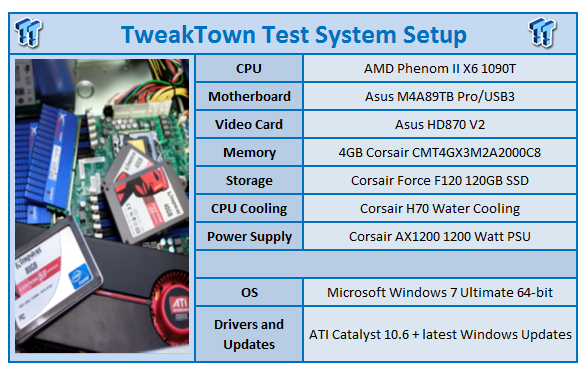
Setting up the ASUS M4A89TD PRO/USB was not hard at all. As usual the ASUS Driver installation application gets you running very quick while still allowing you flexibility on what utilities you put on your system.
This review marks the first time we are using a factory overclocked GPU in our testing. The reasoning behind this was fairly simple; after speaking with multiple manufacturers we found that they are producing less reference GPUs and pushing the factory overclocked ones to the market. We are seeing these come out at reduced costs which is making them more common in the market place.
We will also begin using 1600MHz as the default memory setting for our stock memory testing. Again, the reasoning behind this is that more and more motherboards are listing this as the stock default speed. We will note any exceptions to this (cases where the motherboard will OC the CPU to reach this speed).
Synthetic Tests - Part I
With any system you will want to see a combination of synthetic testing and real-world. Synthetics give you a static, easily repeatable testing method that can be compared across multiple platforms. For our synthetic tests we use Everest Ultimate, Sisoft Sandra, FutureMark's 3DMark Vantage and PCMark Vantage, Cinebench as well as HyperPi. Each of these covers a different aspect of performance or a different angle of a certain type of performance.
Memory Bandwidth
Memory is a big part of current system performance. In most systems slow or flakey memory performance will impact almost every type of application you run. To test memory we use a combination of Sisoft Sandra, Everest and HyperPi 0.99.
Sisoft Sandra
Version and / or Patch Used: 2010c 1626
Developer Homepage: http://www.sisoftware.net
Product Homepage: http://www.sisoftware.net
Buy It Here
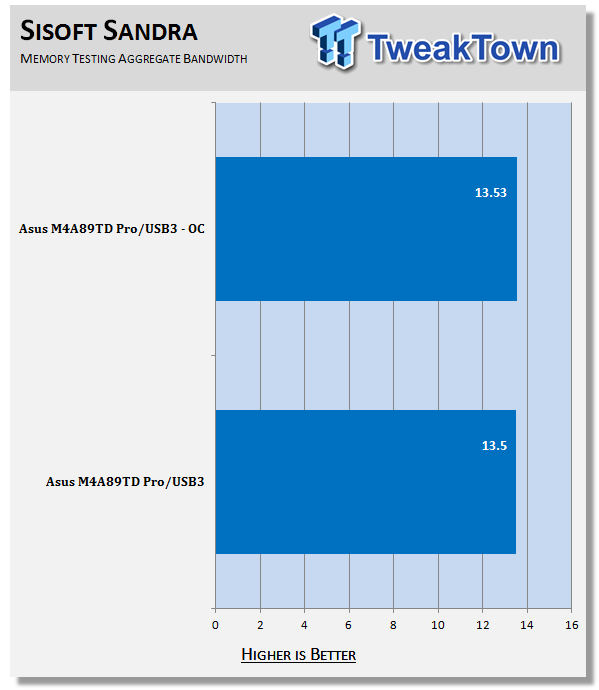
At our new stock speed of 1600MHz the ASUS M4A89TD PRO/USB3 seemed to run a little faster than the jump from 1333 to 1600MHz would warrant. Normally at 1333 we see numbers in the low 12GB/s range with a 66MHz bump we are almost a GB/s faster.
Everest Ultimate
Version and / or Patch Used: 5.30.1983
Developer Homepage: http://www.lavalys.com
Product Homepage: http://www.lavalys.com
Buy It Here
Everest Ultimate is a suite of tests and utilities that can be used for system diagnostics and testing. For our purposes here we use their memory bandwidth test and see what the theoretical performance is.
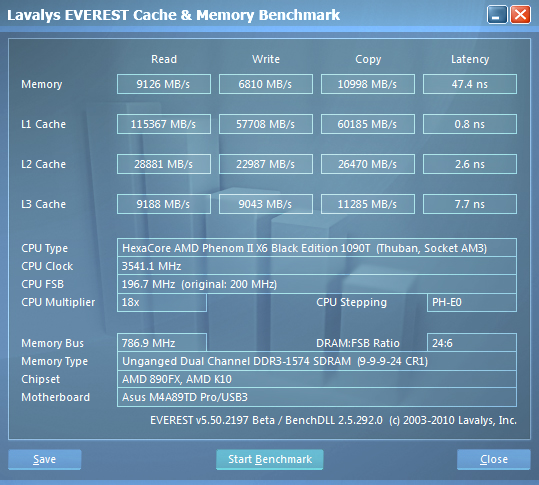
Stock Memory Performance
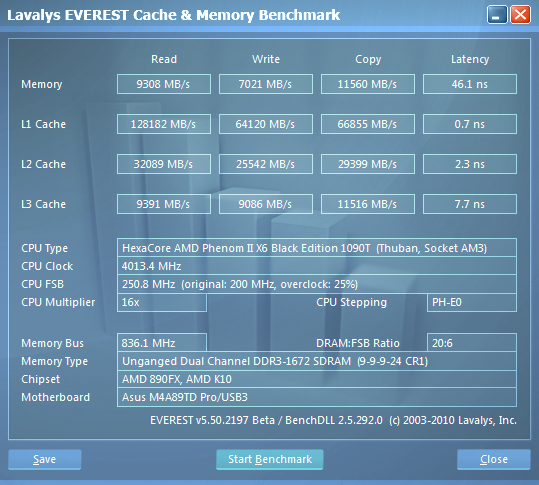
Overclocked Memory Performance
Oddly Everest does not show the memory at 1600MHz during our stock testing. This is despite being set to that in the BIOS. Instead it lists the speed at 1574MHz. It also shows the CPU speed at 3.5GHz. Again, this is due to the single core nature of Everest which kicks in the Turbo modes of both AMD and Intel CPUs.
HyperPi 0.99
Version and / or Patch Used: 0.99
Developer Homepage: www.virgilioborges.com.br
Product Homepage: www.virgilioborges.com.br
Download It Here
HyperPi is a front end for SuperPi that allows for multiple concurrent instances of SuperPi to be run on each core recognized by the system. It is very dependent on CPU to memory to HDD speed. The faster these components, the faster it is able to figure out the number Pi to the selected length.
For our testing we use the 32M run. This means that each of the four physical and four logical cores for the i7 and the four physical cores of the i5 is trying to calculate the number Pi out to 32 million decimal places. Each "run" is a comparative to ensure accuracy and any stability or performance issues in the loop mentioned above will cause errors in calculation.
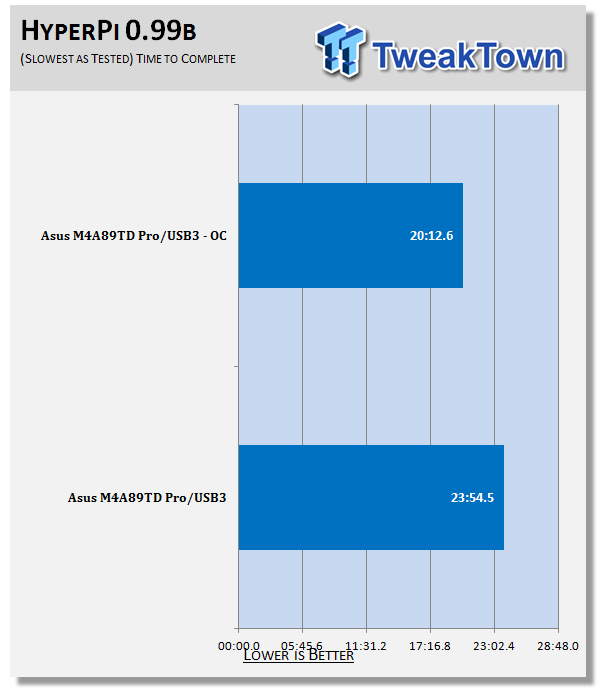
The performance numbers here are much better than we usually see from an AMD based system. The M4A89TD PRO when the memory is set to 1600MHz can get some number crunching done for you. These results bode well for our Lightwave and transcoding testing later.
Synthetic Tests - Part II
Disk Drive Controller
The system drive controller is an important part of system performance. In most modern boards your drive controller will run off of the PCI-e bus. The PCI-e bus performance can be affected by poor trace layout as well as many other design choices that show up on different boards.
For testing we use Sisoft's Sandra and Everest.
SiSoft Sandra
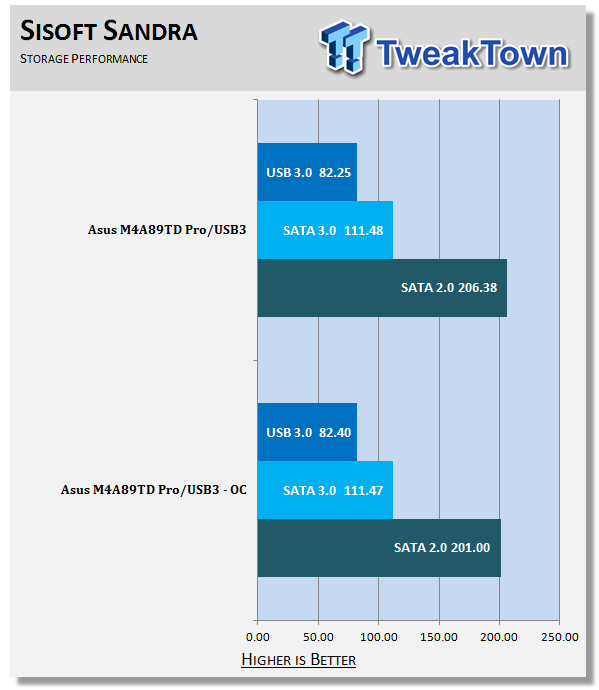
HDD performance was not as good as it could have been. Granted, you are still running at 200MB/s read speeds, but even this falls behind the 240+ we have seen on other motherboards. The SATA 3.0 and USB 3.0 speeds are right where they should be.
Everest
Stock HDD Performance
Overclocked HDD Performance
Stock USB 3.0 Performance
Overclocked USB 3.0 Performance
Everest again backs up our Sandra numbers and shows us that our issue seems to be linear read at the end of the drive. This is an unexpected item and could be due to the Trim firmware on the Force 120 more so than the SB850 controller.
Synthetic Tests - Part III
Here is where we dig out the FutureMark tests.
PCMark Vantage
Version and / or Patch Used: 1.0.0.0
Developer Homepage: http://www.futuremark.com/
Product Homepage: www.futuremark.com
Buy It Here
For overall system performance we use PCMark Vantage. This is run in both x86 and x64 mode to give the best indication of performance.
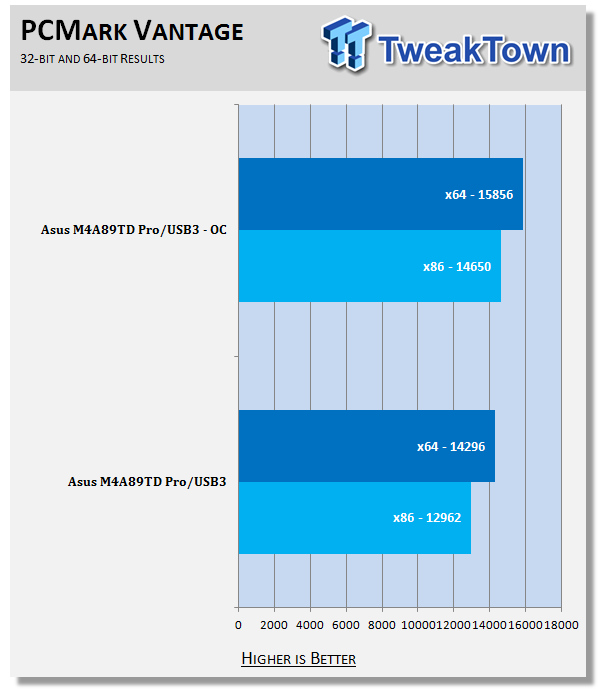
At stock speeds the PCMark Vantage numbers are a little lower than we expected. When we were using 1333MHz as our stock memory speed we saw numbers in the mid 13k range for the x86 run. We have a feeling the issue here is the slower linear read speeds as these can impact more than a few of the tests in the suite.
3DMark Vantage
Version and / or Patch Used: 1.0.1
Developer Homepage: http://www.futuremark.com/
Product Homepage: www.futuremark.com
Buy It Here
For synthetic gaming tests we used the industry standard and overlockers bragging tool 3DMark Vantage. This is a test that strives to mimic the impact modern games have on a system. Futuremark went a long way to change from the early days of graphics driven tests to a broader approach including physics, AI and more advanced graphics simulations.
3DMark Vantage uses the DX10 API in addition to having support for PhysX. As we are no longer using an NVIDIA GPU for testing (at least until we can get a GTX 4xx card) you will only see the CPU based PhysX results in the scores. For testing we use the Performance test run.
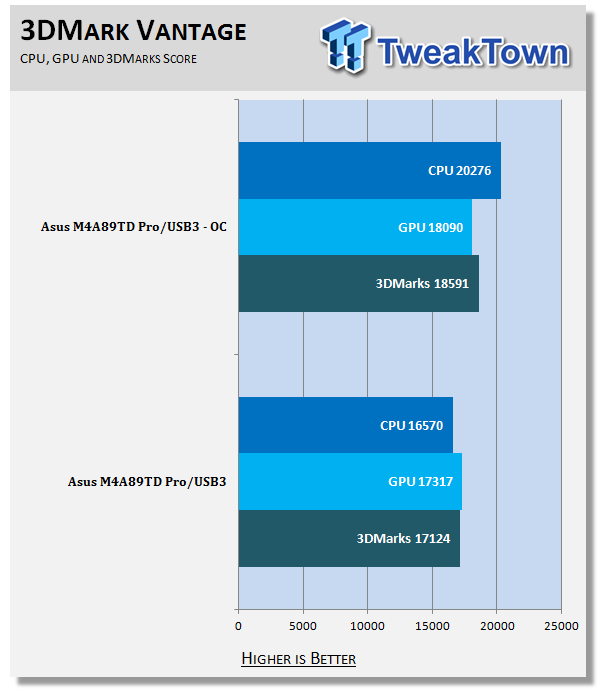
With a more capable GPU the M4A89TD PRO does well in 3DMark Vantage. We also find that when we open up room for the CPU, the GPU is able to give us a little more as well.
Cinebench R11. x64
Version and / or Patch Used: R11.5 x64
Developer Homepage: http://www.maxon.net/
Product Homepage: www.maxon.net
Download It Here
Cinebench is a synthetic rendering tool developed by Maxon. Maxon is the same company that developed Cinema4D, another industry leading 3D Animation application. Cinebench R11.5 tests your systems ability to render across a single and multiple CPU cores. It also tests your systems ability to process OpenGL information.
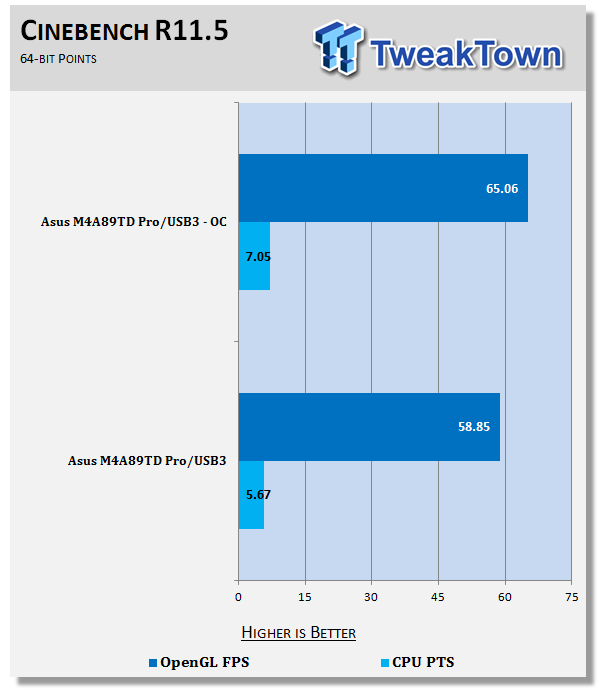
Again, the M4A89TD PRO shows it is a capable board. The Cinebench numbers are actually a little more than we are used to at stock and overclocked speeds. It would seem that with the higher memory clocks the AMD CPUs and chipsets can do quite a bit more.
Real-World Tests - Part I
Real-world testing allows us to see how well a product will perform when used in the same manner as it would be in your house or office. It is an important side to performance testing as it can uncover hidden glitches in the way a product performs.
It is especially true when testing a mainboard; there are so many components of a board that have to interact that any problems between parts can cause a failure of the whole.
For real-world testing we use some common applications and functions. We test with LightWave 3D for rendering performance, AutoGK for transcoding from DVD to AVI and two games for gaming testing.
Rendering
Rendering of 3D Animation is a system intensive endeavor. You need a good CPU, memory and HDD speed to get good rendering times. For our testing we use LightWave 3D. This software from Newtek is an industry standard and has several pre-loaded scenes for us to use.
LightWave 3D
Version and / or Patch Used: 9.6
Developer Homepage: http://www.newtek.com
Product Homepage: http://www.newtek.com/lightwave/
Buy It Here

It looks like LightWave would not be an issue on the M4A89TD PRO/USB3. We had a heads up that this would be the case with the HyperPi numbers, but it is still nice to see. With faster HDDs (or an improved driver/BIOS) we might see even better performance.
AutoGK
Version and / or Patch Used: 2.55
Developer Homepage: http://www.autogk.me.uk/
Product Homepage: http://www.autogk.me.uk/
Download It Here
AutoGK stands for Auto Gordian Knot; it is a suite of transcoding tools that are compiled into an easy to install and use utility. It allows you to transcode non-protected DVDs and other media to Xvid or Divx format. For our testing purposes we use a non-DRM restricted movie that is roughly 2 hours in length. This is transcoded to a single Xvid AVI at 100% quality.
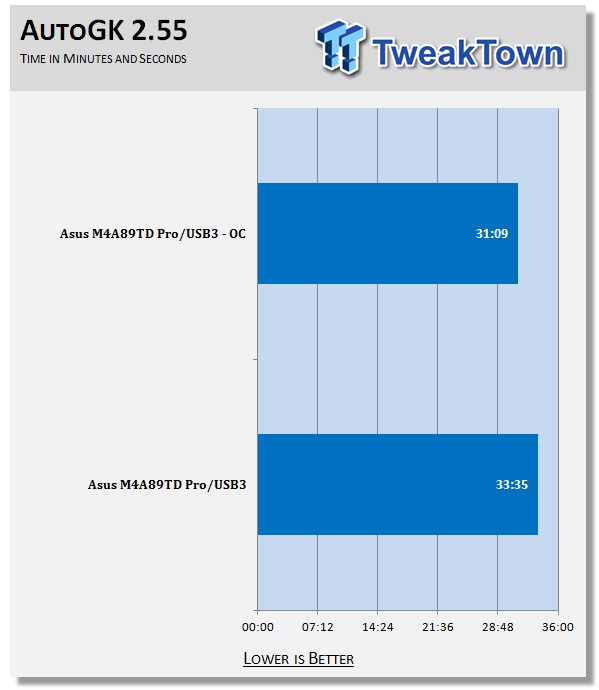
While our transcoding times are still good, we feel that the M4A89TD PRO could be much faster with a little tweaking of the HDD performance.
Real-World Tests Part II
Here we have our real gaming tests. Each of the games we chose uses multiple cores and GPUs. They are able to stress the system through use of good AI. Both have decent positional audio that adds impact to the sound subsystem of the board. We ran each game through the level or parts listed and recorded frame per second using FRAPS. This brings the whole game into play.
*** A word on gaming as a motherboard test; ***
Despite the fact that most games are very GPU limited, we are still noticing HDD and even audio creating issues in gaming performance. Because of this you may see differences in the number of frames rendered per second between different boards. Usually the difference is very small but occasionally, because of bad tracing, poor memory or HDD performance this difference is significant. The issues are often more prevalent in older versions of DirectX but can still pop up in DX10 and 11.
Call of Duty Modern Warfare 2 (DX9)
Version and / or Patch Used: 1.0
Timedemo or Level Used: First combat until the school is cleared
Developer Homepage: http://www.infinityward.com
Product Homepage: http://modernwarfare2.infinityward.com
Most of you know about the game Modern Warfare 2. It caused quite a bit of controversy in the latter half of 2009. The game is a first person shooter with a heavy combat emphasis. It follows the events in the first Modern Warfare very closely and brings back several characters from the original.
As with most games in the Call of Duty franchise, it features a heavy AI load. This is not because of a complex AI routine, but more due to the sheer number of enemies in any given combat situation. It is also our single DX9 based game in our testing suite. Settings are shown below.
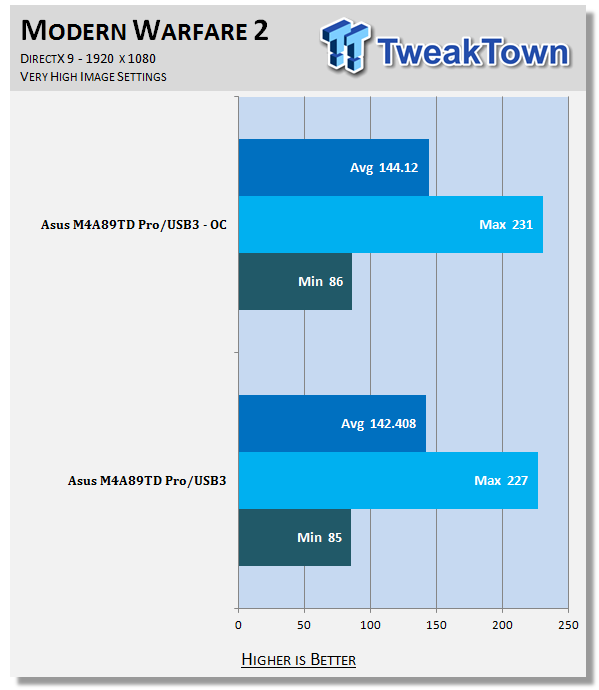
The M4A89TD PRO will certainly not hold you back if you are playing Modern Warfare 2. With minimum FPS in the high 80s, you can be certain that whatever GPU you drop in will be able to perform at its best.
Far Cry 2 (DX10)
Version and / or Patch Used: V1.00
Timedemo or Level Used: Clearing the Safe house through to the Rescue
Developer Homepage: http://www.ubi.com
Product Homepage: http://farcry.us.ubi.com
Far Cry 2 is a large sandbox style game. There are no levels here, so as you move about the island you are on you do not have to wait for the "loading" sign to go away. It is mission driven so each mission is what you would normally think of as the next "level".
In the game you take the role of a mercenary who has been sent to kill the Jackal. Unfortunately your malaria kicks in and you end up being found by him. Long story short, you become the errand boy for a local militia leader and run all over the island doing his bidding. Settings we used for testing are shown below.
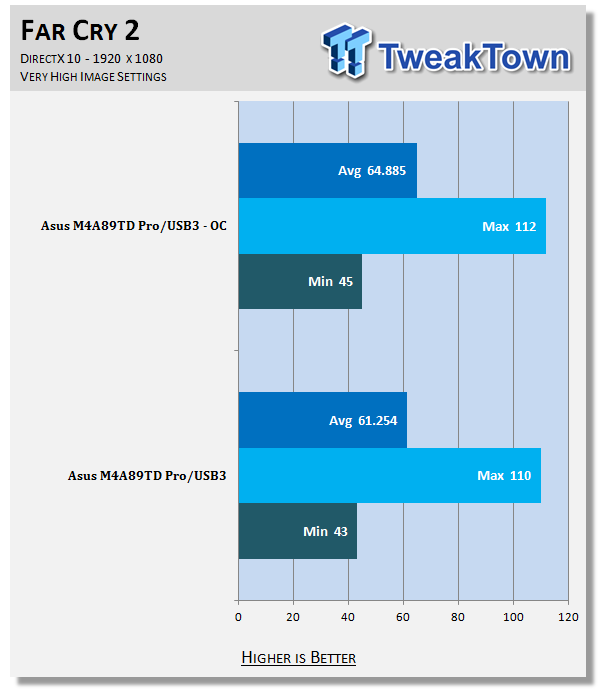
Far Cry 2 is also not going to be an issue on the M4A89TD.
Battlefield Bad Company 2 (DX11)
Version and / or Patch Used: V1.00
Timedemo or Level Used: From washing up on the beach to the mine fields.
Developer Homepage: http://www.ea.com/
Product Homepage: http://badcompany2.ea.com/
Battlefield Bad Company is another sequel and also another game "franchise". Bad Company 2 is also our DX11 Shooter game. The game follows a fictitious B company team on a mission to recover a Japanese defector. This puts you back in World War II (at least for the beginning of the game) while the multi-player game is centered on much more modern combat. For our testing we used the single player mode. Settings are shown below.
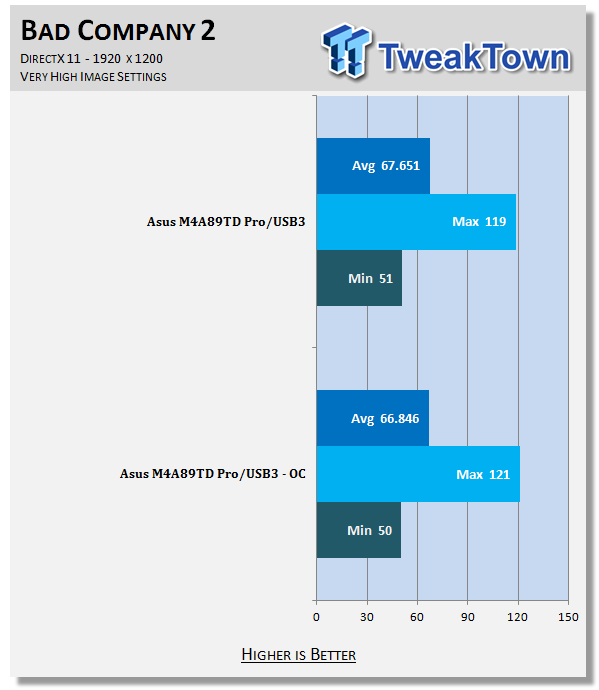
Bad Company 2 also gives us no problems with minimum frame rates right around 50.
Gaming Conclusion
The M4A89TD PRO/USB3 did not have any problems with gaming. Of course, we had a factory overclocked GPU rendering the frames. Still, there is more to gaming than just the frames that hit your monitor. The M4A89TD PRO was also able to provide us with a very good audio experience. Level load times were more than acceptable and there were no issues with control input. In general, the M4A89TD PRO/USB3 is a very capable gaming platform.
Power Usage, Heat Tests and Final Thoughts
Power Consumption
We are now able to find out what kind of power is being used by our test system and the associated graphics cards installed. Keep in mind; it tests the complete system (minus LCD monitor, which is plugged directly into an AC wall socket).
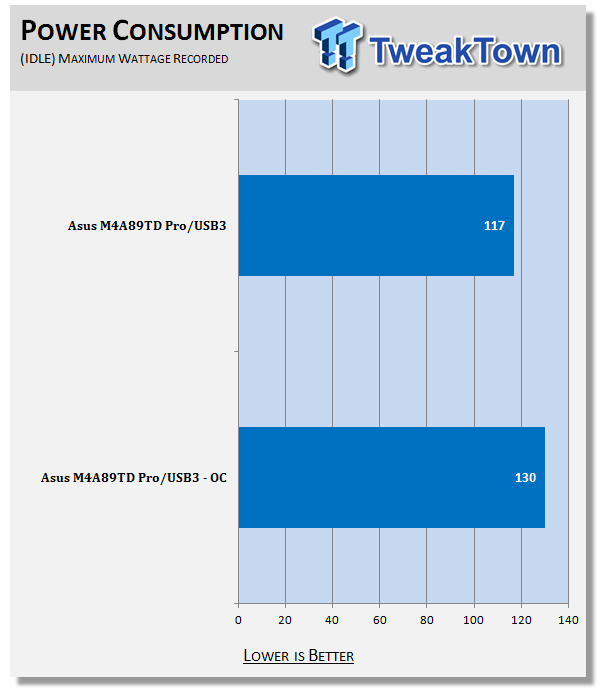
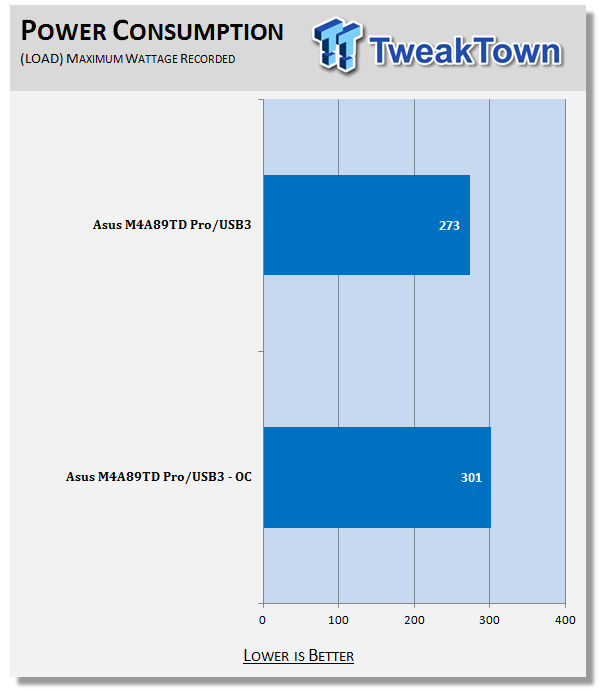
With its EPU processor and software, the ASUS M4A89TD PRO/USB3 does well to keep the power draw down at idle speeds even with the higher clocked HD 5870 V2. When we push things well, all bets are off as all of the systems fire up to give you the speed you are asking for.
Heat Generation
As a new measure, we are now monitoring the heat generation from the key components on the motherboard; this being the Northbridge, Southbridge (if it contains one) as well as the Mosfets around the CPU. The results are recorded at idle and load during the power consumption tests.
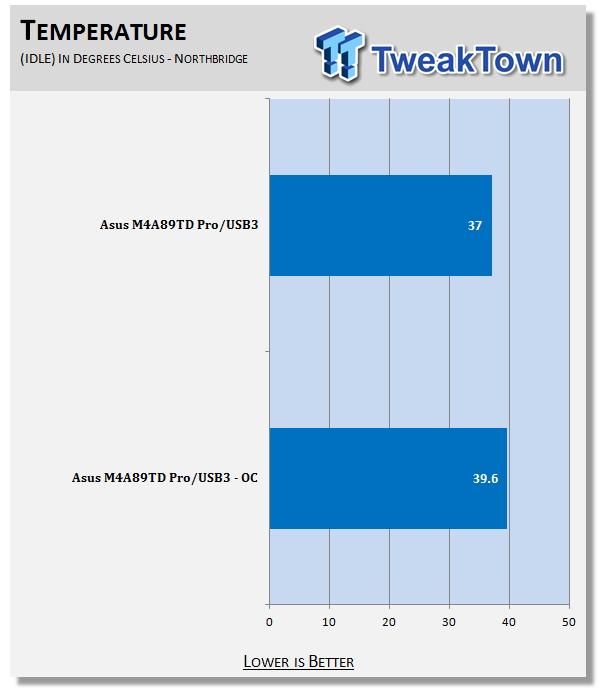
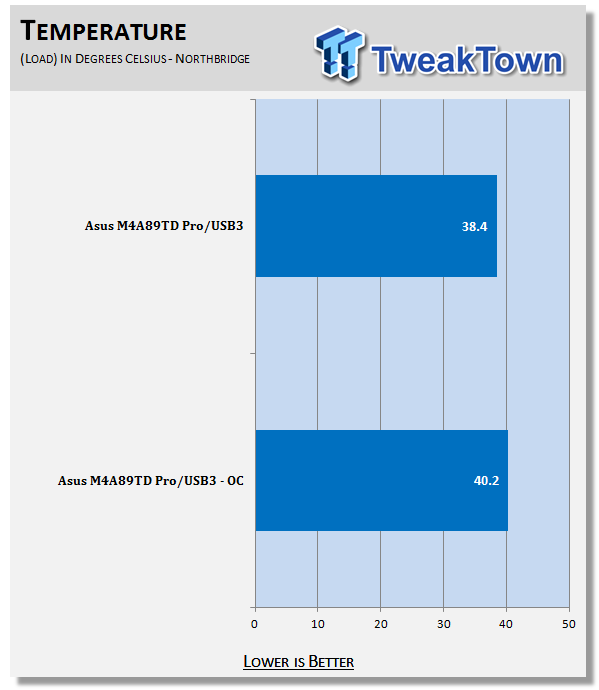
Even with the interesting move of the Northbridge to below the voltage regulation circuits, we did not see much of an increase in heat generated by this hardware. Even under the load of overclocking, heat was not much of an issue.
Final Thoughts
The ASUS M4A89TD PRO/USB3 is a very capable motherboard with multiple usage models. It is a great gaming platform (that will not cost you an arm and a leg) while also more than competent to handle workstation level tasks.
The design departures we noted in the layout section did not cause us any issues at all. Instead we found the board to have a most effective layout for airflow, installation and day to day usage. HDD performance did seem to be lower than expected, but with the areas we saw as problematic, we think this could be a combination of the SB850 and the Trim firmware on the Corsair Force 120 SSDs we are using.
At $184.99 from NewEgg.com you will be getting a lot for your money as you put together your AMD system. ASUS' Core Unlocker will even allow you to try your luck at picking a dual or tri core CPU that may have extra "hidden" cores. Simply put, you would not go wrong in picking up the M4A89TD PRO/USB3 for any AMD system you are planning on.

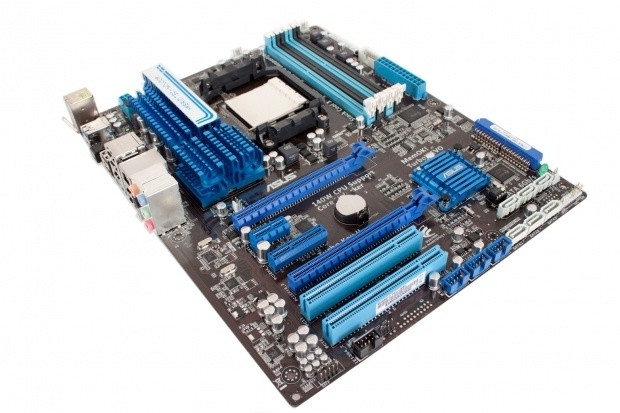
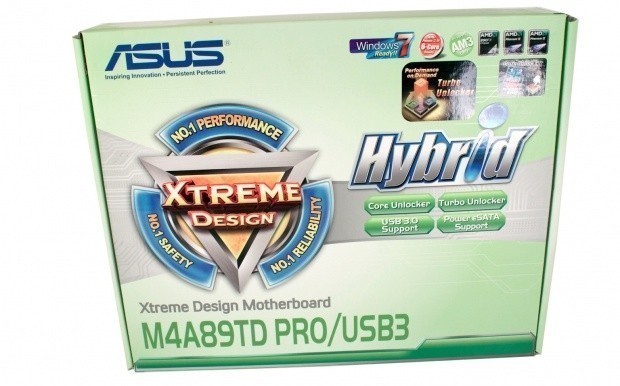
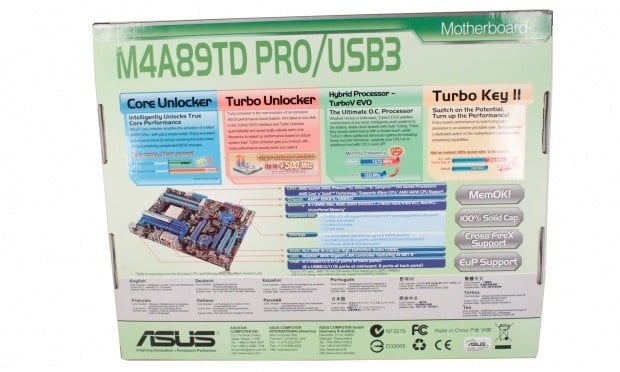

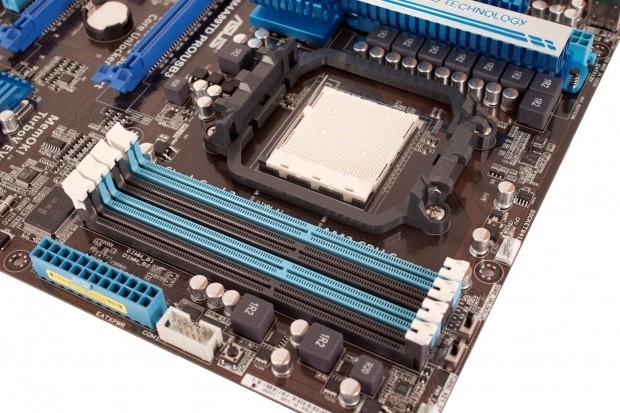
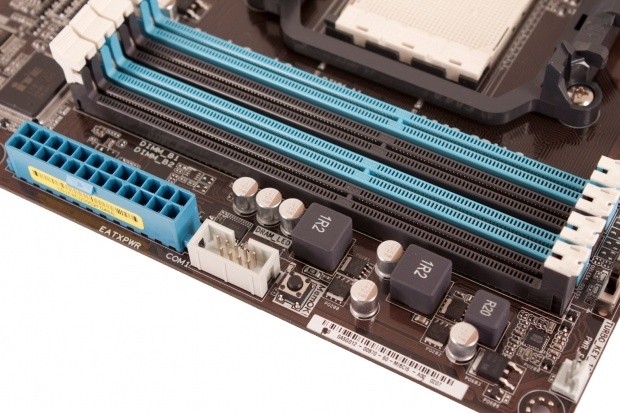
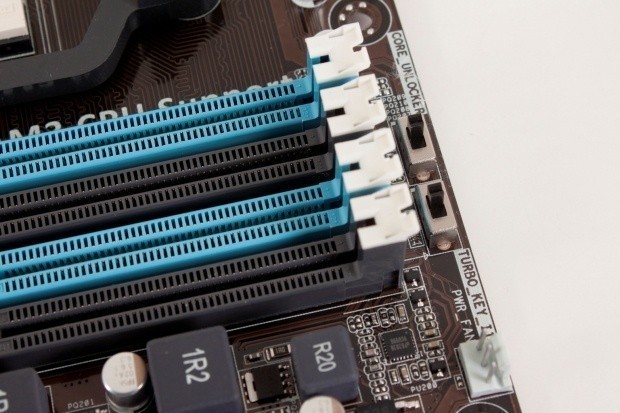
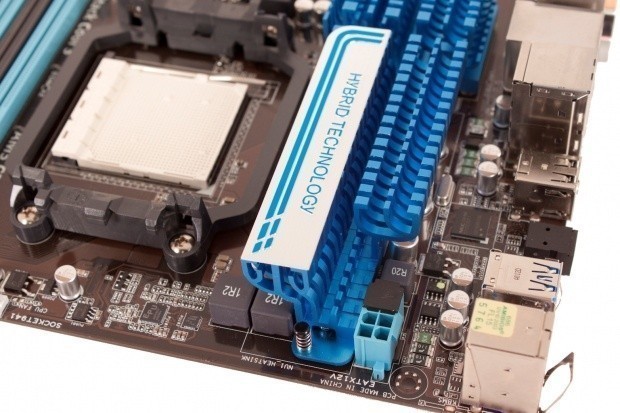
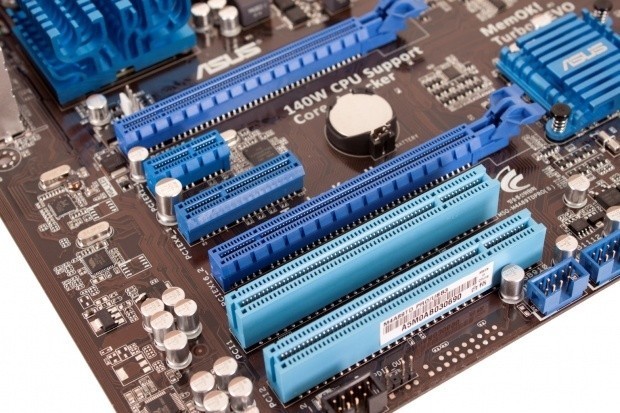
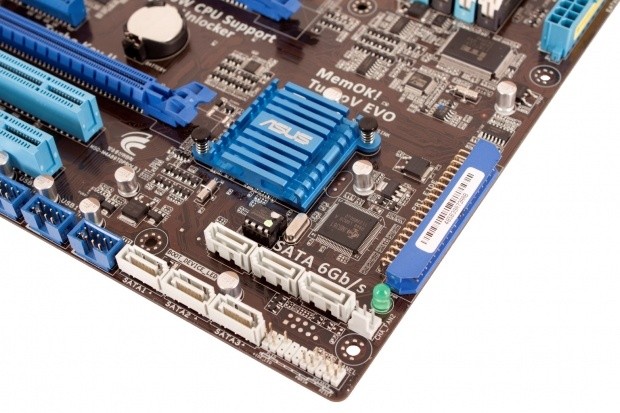
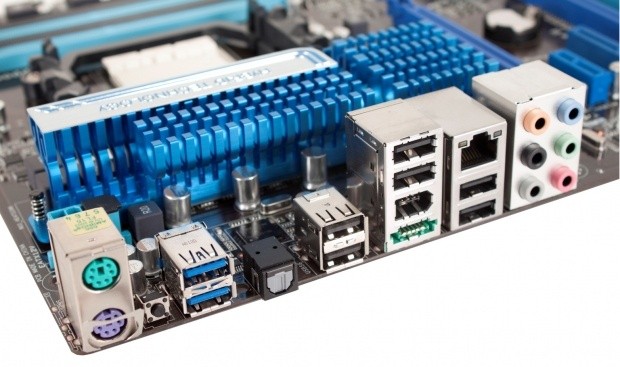
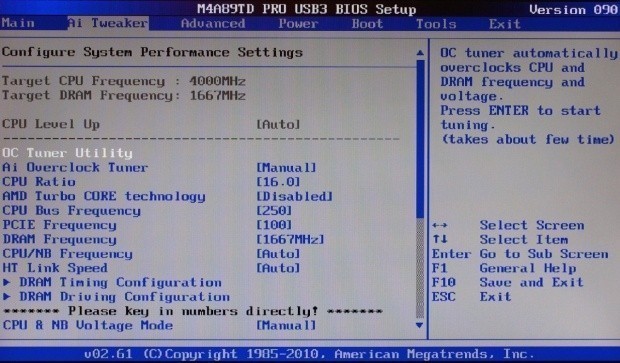
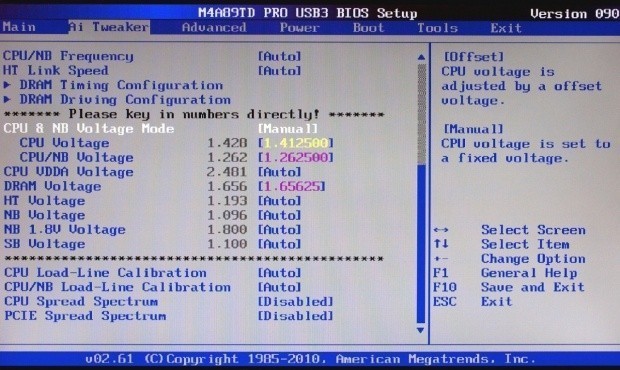
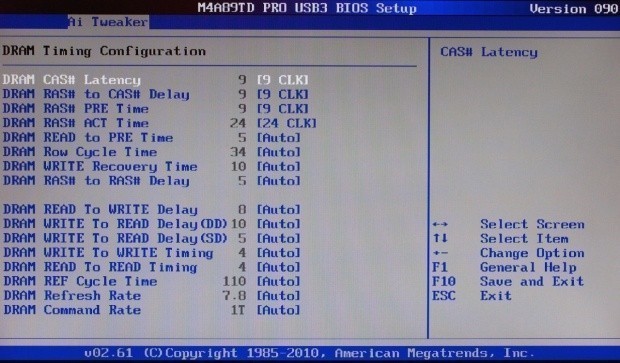
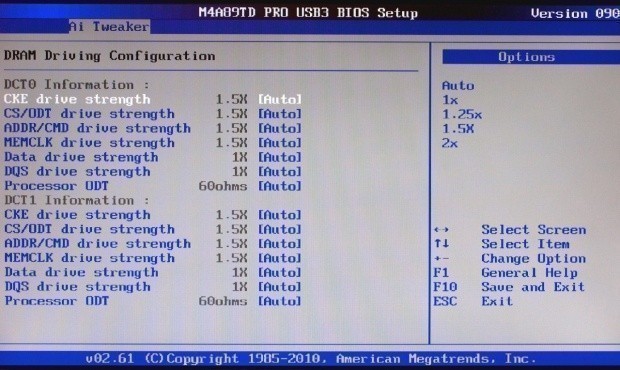
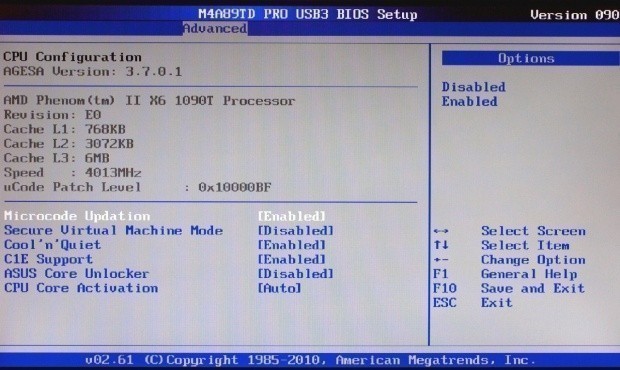
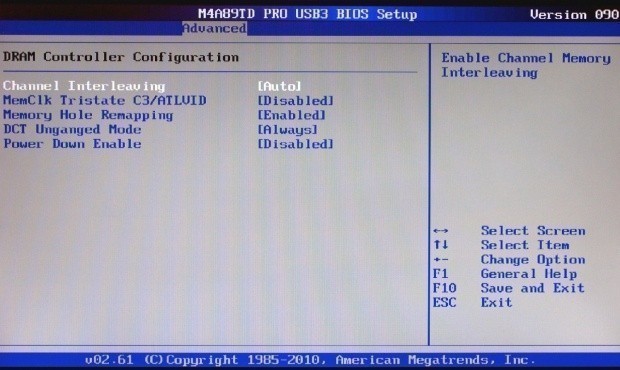
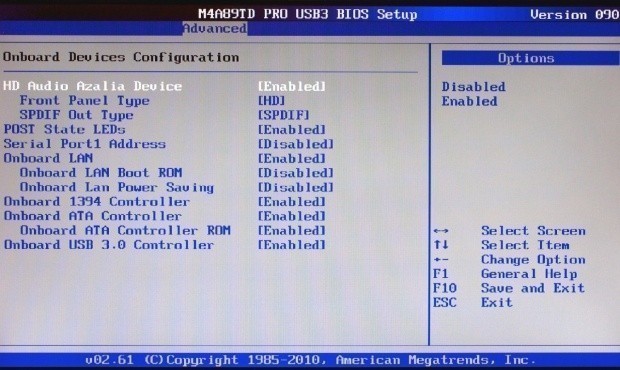

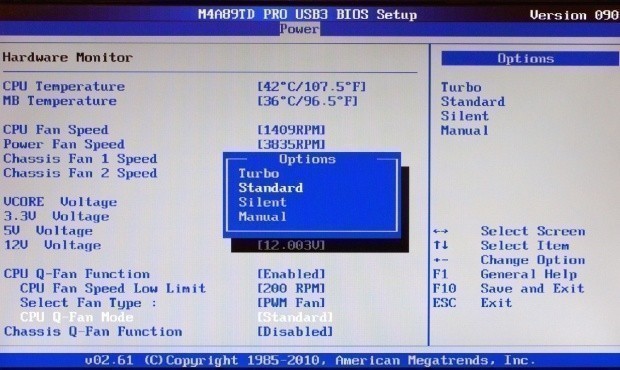




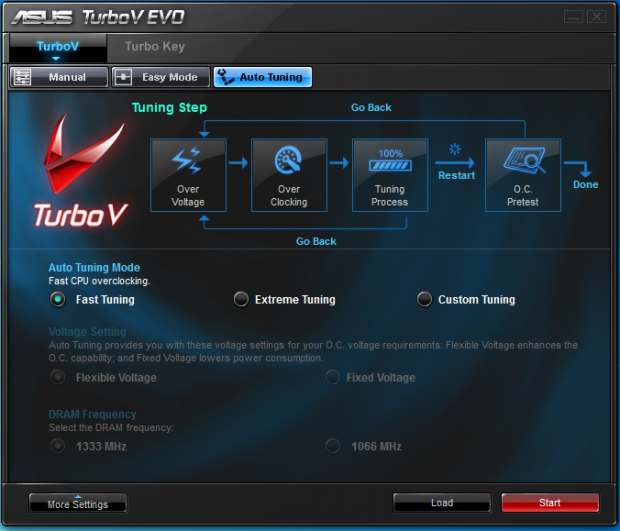











 United
States: Find other tech and computer products like this
over at
United
States: Find other tech and computer products like this
over at  United
Kingdom: Find other tech and computer products like this
over at
United
Kingdom: Find other tech and computer products like this
over at  Australia:
Find other tech and computer products like this over at
Australia:
Find other tech and computer products like this over at  Canada:
Find other tech and computer products like this over at
Canada:
Find other tech and computer products like this over at  Deutschland:
Finde andere Technik- und Computerprodukte wie dieses auf
Deutschland:
Finde andere Technik- und Computerprodukte wie dieses auf